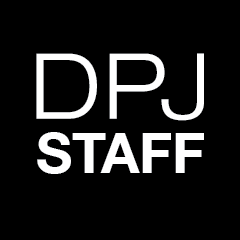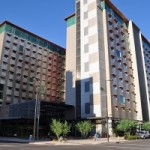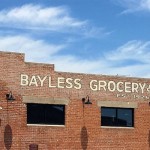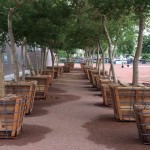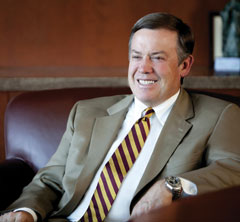
(From the Mag brings you excerpts and continued conversations from DPJ Magazine, a bi-monthly print publication distributed throughout Greater Downtown Phoenix and beyond. Find the rest of the interview with President Crow in the latest edition DPJ Mag, now available online.)
Arizona State University President Michael Crow talked about the vibrancy and design of the city’s center with DPJ guest editor David Leibowitz.
David Leibowitz: How important should good design be to the city of Phoenix?
Michael Crow: Design is essential; it is adaptation to place to make all the natural features of the place work to our benefit. The desert is naturally cooling at night, as opposed to the city which is naturally heat absorbing. If we can change our design, our structure, we can change the cost basis for air conditioning. We can maintain species. We can change water transpiration rates. We can change the way the city works, both environmentally and economically and from the livability prospective itself.
We have a tremendous opportunity to use design to our advantage to enhance livability. Now, it’s already livable. How do you make it fantastically livable so that everybody wants to be here? The attrition rate is not trivial. Lots of people come, they experience the summer, they experience what happens at night, in the morning and then they leave. Imagine those people not leaving and being able to attract anyone to a fantastically livable place. We’re going to have to design and engineer some of that to make it work.
DL
: How might Phoenix be engineered differently?
MC: We have a range of ways that we can engineer surfaces. We can engineer rooftops, shade structures. We could engineer buildings that change the nighttime heat index problem. That means we have to think it through. We have to build a unique city rather than just a transplant city. And that requires rethinking design, rethinking materials, rethinking structures. And from that you’ll be able to have the city grow without becoming a place that never goes below 95 degrees at night. Or eventually never goes below a hundred.
DL: Where are we in the continuum of downtown evolution?
MC: I think we’re still in the early stages which is good; we’ve got high energy in the early stages. I do think the progress will continue; I think it really needs to continue. And I think that we’re early and that’s good, because that means we’ll be able to take advantage of renewable energy technologies. We’ll be able to take advantage of advanced nano materials. We’ll be able to take advantage of new engineering techniques. All of which could make Downtown Phoenix into an absolutely unique kind of venue. It has many of these now and it’s done very, very nicely up to this point. We need to keep all that going.
DL: You have said that Phoenix’s competitive advantage is ours to lose. What did you mean by that?
MC
: We have all of the natural assets. We have a beautiful location, beautiful place, relatively happy environment, a successful ability to advance, to do things, to make things happen. So, we have to figure out how to make all of that work. And in making all of that work, with all the natural assets, it’s going to extend our competitive advantage. It’s ours to lose. If we don’t figure out how to urbanize, if we don’t figure out how to fill the Central City, if we don’t figure out how to build intensity, then we will lose to other places that have fewer natural advantages.
Downtown needs to become a place of visually intense energy. And that’s an energy hung in between sectors or groups. Sports, finance, education, business, technology – all those things are required to make a vibrant downtown.



